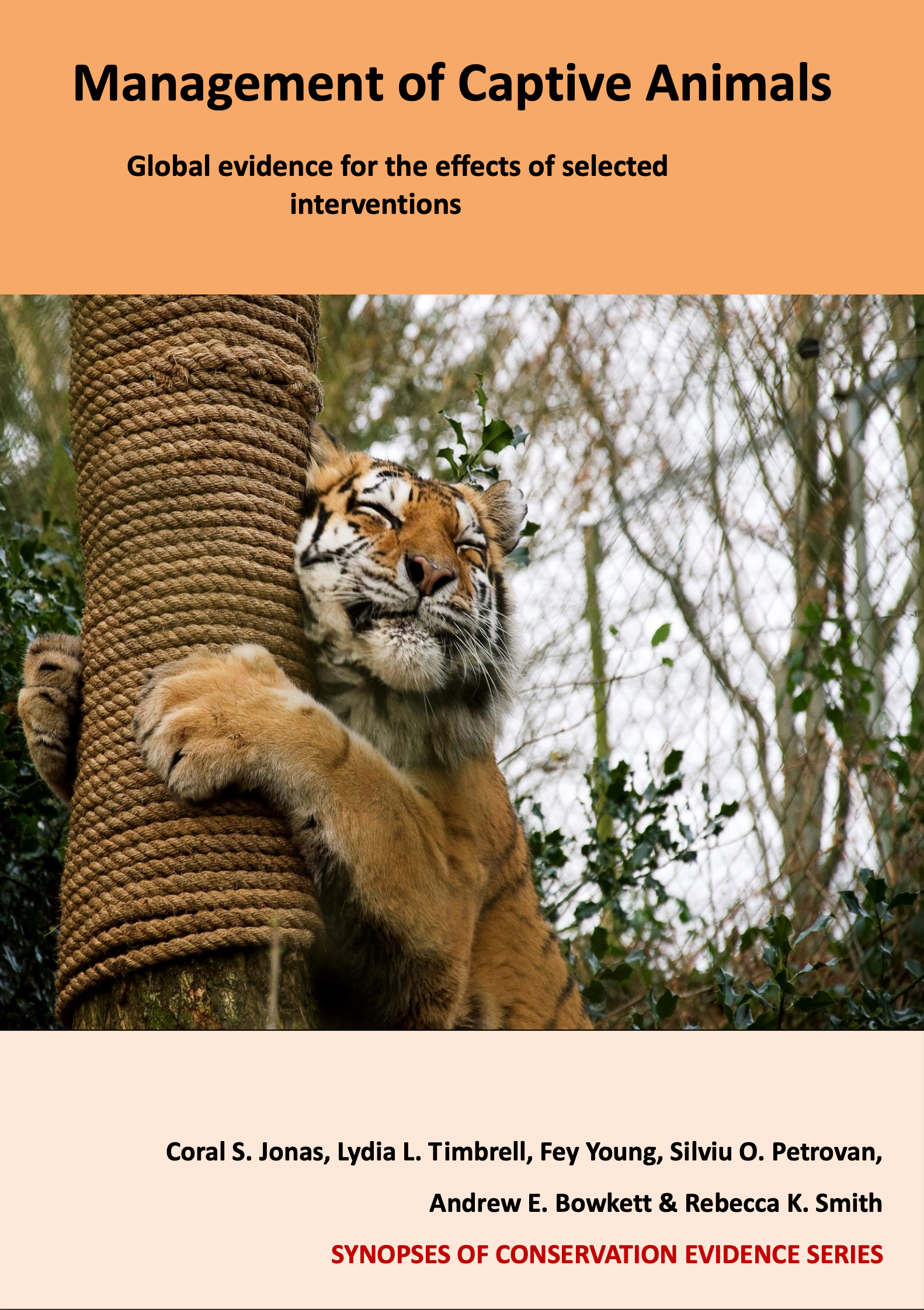Primates: Present feeds at different crowd levels
-
Overall effectiveness category Likely to be beneficial
-
Number of studies: 1
View assessment score
Hide assessment score
How is the evidence assessed?
-
Effectiveness
60% -
Certainty
40% -
Harms
0%
Study locations
Supporting evidence from individual studies
A before-and-after study in 1993 at Los Angeles, USA (Wood 1998) found that foraging time and object use among chimpanzees Pan troglodytes presented with new food and environmental enrichment was greater with small viewing crowds than with large ones. Foraging increased from 0% of the overall time observed with old enrichment and low crowd levels to 29% when there were high crowd levels and new enrichment and up to 33% when new enrichment was given with low crowds. Object use was increased from 3% with low crowds and old enrichment to 4% and 5% when new enrichment was given with high crowds and low crowd levels respectively. Researchers filmed the group of chimpanzees for three hours between 12:00 h and 15:00 h with one of four treatments each day: large crowd, new enrichment; large crowd, old enrichment; small crowd, new enrichment; small crowd, old enrichment and low crowd, no enrichment. The group of 11 chimpanzees were given access to the enrichment, browse, ice blocks and stuffed sacks at 12:00 h. Repeated observations were made over five weeks. Scan sampling methods were used to record the behaviour of each chimpanzee every 60 seconds. (CJ)
Study and other actions tested
Where has this evidence come from?
List of journals searched by synopsis
All the journals searched for all synopses
This Action forms part of the Action Synopsis:
Management of Captive Animals
Management of Captive Animals - Published 2018
Captive Animal Synopsis





)_2023.JPG)














